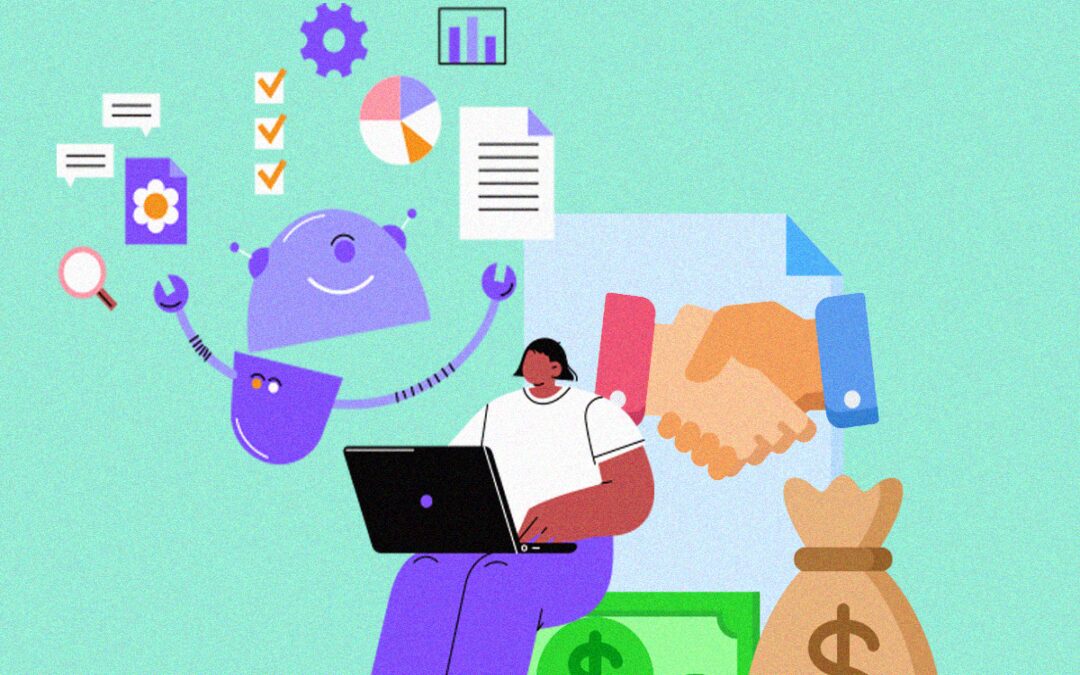India’s large lenders are rewiring through GenAI to improve their customer interface and get a leg up on their younger, disruptive competitors, report Beena Parmar & Annapurna Roy
A slew of banks, including the country’s largest lender, State Bank of India (SBI), as well as its private sector peers HDFC Bank, Axis Bank and IndusInd Bank, are turning to generative artificial intelligence (GenAI) to radically change the way their services are consumed, leading to ease of use and better engagement with customers.
The banking, financial services and insurance (BFSI) sector has been one of the fastest adopters of technology. Large banks and financial institutions are, however, being challenged by smaller players and fintechs. In such a scenario, integrating the front-end as well as the back end may help legacy institutions get a leg up on their younger, disruptive competitors, said experts.
“GenAI is a very good tool if it can be used to assist people with knowledge, for productivity or having more meaningful, insightful conversations with customers,” said Nitin Chugh, SBI’s head of digital banking and transformation.
SBI is looking at long-term capabilities while testing use cases in the short-term, starting with assistance. As a first step, it is focusing on doing so internally among its employees. While some banks are deploying customer-facing bots, SBI would probably consider that at a later stage, said Chugh.
Overall, IT spending by India’s BFSI firms in 2024 is estimated at $13.2 billion, up 12.2% from $11.8 billion in 2023, according to June data from Gartner. Spending on software is projected to increase a record 18.5% year-on-year, a significant jump from 9.6% in 2023 and above the global average, it said.
Today, 80% of Indian banking is digitised, making it among the most digitised banking ecosystems in the world given advancements such as Unified Payments Interface (UPI) and 24×7 payments.
In May, fintech company Setu, part of the Pine Labs Group, unveiled Sesame, India’s first large language model (LLM) specifically designed for the BFSI sector, in collaboration with indigenous AI research firm Sarvam AI.
LLMs are AI-based programs trained by huge datasets to understand text and human language.
Setu’s co-founder Nikhil Kumar called it a “ChatGPT moment” in financial services.
Similarly, fintech players such as financial fraud detection startup AdvaRisk, funded by ICICI Bank and other investors; four-year old cash flow-based financing platform Velocity, financed by Peter Thiel’s Valar Ventures; and Samsung-backed customer service automation startup Gnani.ai, are helping banks improve core business with the help of data.
“Broadly, I see financial institutions working on proof of concepts, small pilots using fine-tuned open source LLMs in their owned infrastructure and work towards industrialising these solutions,” Ramesh Lakshminarayanan, chief information officer, HDFC Bank, told ET.
HDFC Bank, India’s largest private bank by revenue, currently has a proof of concept to help coders code faster. It is also looking to use LLMs to interpret key data repositories like statements and provide meaningful analysis to relationship managers, phone agents and other sales and service professionals.
Technology firm Microsoft is working with Axis Bank and Aditya Birla Capital, among others, to deploy processes using GenAI to transform contact centres, boost sales and overhaul claims and underwriting processes.
“GenAI is reshaping the way we operate,” said Sonali Kulkarni, BFSI lead, Microsoft India.
Building on GenAI
Companies are increasingly using chatbots and data to improve their customer service calls. They are also relying on the new-age technology to speed up resolution, analyse statements and balance sheets, read or interpret spending patterns, and to help cross-sell products and services.
AI, which has been in use for more than a decade, and GenAI-based systems are also aiding better predictive analysis and efficient decision-making based on data beyond human comprehension. Bank frauds can be spotted within seconds.
In customer service, GenAI is helping reduce call volumes, classify complaints, automate and summarise content, train virtual financial consultants and streamline credit approval processes to improve day-to-day activities.
Some banks are using in-house data science teams to build use cases or functionalities with existing open-source models, conditioned to their requirements.
Newer multimodal models, which are showing much more promise than the text-based LLMs are being explored, said multiple bankers.
These models will be the next progression in the coming year which could lead to more cost efficiencies in the next few years, said Avinash Raghavendra, head of IT at Axis Bank.
“Pricing and cost models are evolving as well and while still expensive, there are commercial models being made available which makes it more feasible than they were last year. We expect this trend to continue in the coming year… then the need for privately hosted LLMs as a cost reducer might fade,” he said.
Yet, human intervention will continue for now, said executives.
SBI’s Chugh said their ethical and responsible AI frameworks would ensure near 100% accuracy in use cases, that they are free of bias and are explainable with a human in the loop.
Axis Bank has rolled out chatbots for about 60,000 employees, helping them resolve customer queries within seconds rather than days.
Raghavendra said that unlike say a retail company which can put out 90% accurate data, banking needs to be 100% accurate all the time.
Training models with correct data is key, and Axis Bank has a dedicated team for this which works on re-documenting information such that the required accuracy is achieved, he said.
Guardrails
There is no hesitation in the banking sector when it comes to adopting GenAI, whether in private sector, public sector or global banks, Chugh said, even as there are conversations around guardrails and protecting customers.
Vivek Bajpeyi, chief risk officer at IndusInd Bank, said that while digitisation and GenAI have enhanced convenience, they come with attendant risks, besides hallucinations and inaccuracies. “Risks elements have changed. Now cybersecurity is also a big challenge. The ability to defraud has increased even as technology is also helping uncover frauds,” he said.










